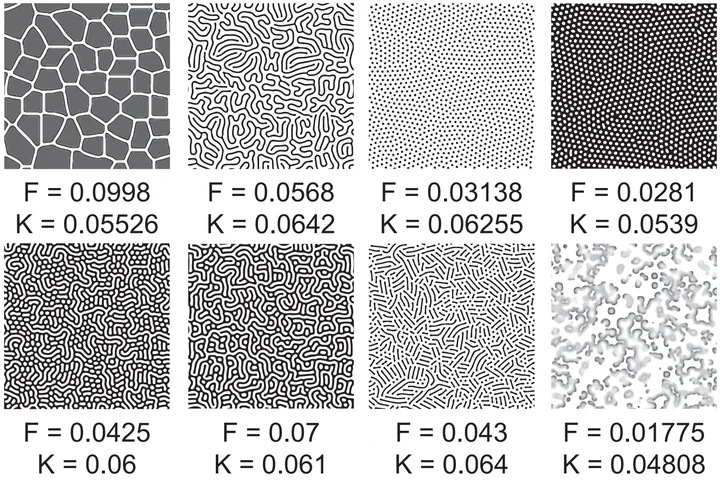Texture Design for Diverse Virtual Touch Sensations: Perceptual Breadth of Parameter-Driven Turing Patterns
 Reaction Diffusion Textures
Reaction Diffusion TexturesSurface haptic technology reintegrates the sense of touch into virtual interactions on touchscreen devices, enhancing social interactions, educational tools, and daily screen tasks. Despite its clear benefits, this technology remains niche and guidelines for designing diverse and compelling touch sensations are lacking.
The ability to easily generate content for and the existence of an established library of unique sensations and interactions may make the adoption of this technology more appealing to the average touchscreen user and for a broader range of mainstream applications. This study looks at the potential for parameter-driven reaction-diffusion algorithms to generate distinct, user-adjustable, and responsive texture stimuli.
Our user study investigating the perceived dissimilarity of a representative set of reaction-diffusion textures found that there is limited potential for reaction-diffusion textures in virtual texture spaces when using a friction-modulating display as the delivery platform, as perceived dissimilarity has a weak association with both control parameters. Control parameters had a stronger association with similarity ratings for real 3D printed textures, suggesting that Turing patterns are more suitable to diverse and intentional texture generation for alternative haptic surface displays (e.g. shape displays).
These results can inform how reaction-diffusion algorithms can be best leveraged to contribute to visual or tactile texture generation pipelines and spaces.